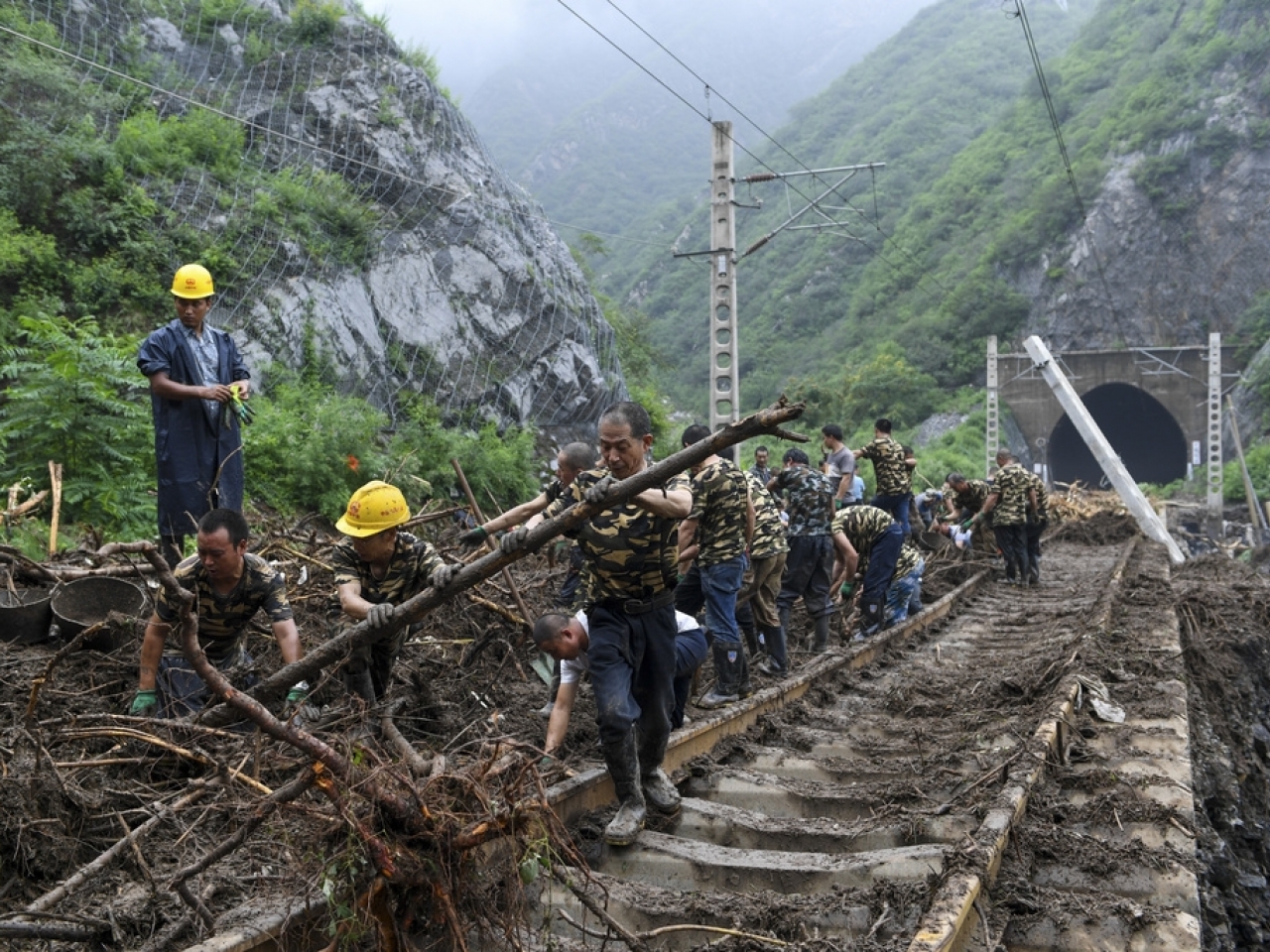The national weather forecaster on Thursday described the torrential rain that has been lashing Beijing and surrounding provinces as "historically rare", and warned that rainfall is likely to trigger landslides and mudslides this month.
The China Meteorological Administration said average rainfall in the past half-month was the highest in the past decade. Its comments come a day after Beijing's weather service confirmed that the rains that caused this week's deadly floods in the capital were the heaviest in 140 years.
Jia Xiaolong, a deputy director of the National Climate Centre, told a monthly press briefing that local governments should gear up for the weather hazards caused by the downpours.
"This month, we are expecting severe convective weather such as heavy rain, thunderstorms, and strong winds. Periodic heavy rain can cause a high risk of weather hazards such as urban waterlogging, mountain torrents, landslides, and mudslides," he said.
"We suggest that relevant departments beef up their inspection and investigation efforts, and manage risks by transferring vulnerable groups."
Authorities in northern Hebei province raised the natural disaster emergency response level was raised to the second highest level, while Beijing kept a warning in place for landslides on its outskirts, the state broadcaster and city government said.
The floods have spread since Typhoon Doksuri swept into southern China. Meanwhile another storm, Khanun, is now swirling over the East China Sea towards Japan, and is expected to approach Zhejiang and Fujian provinces by Friday.
Floodwaters could take up to a month to recede in Hebei province, where the city of Zhuozhou is hardest hit. About 100,000 people in the city southwest of Beijing were forced to leave their homes by the rising waters.
Zhang Hengde, another deputy director of the National Climate Centre, said the rains are characterised by their long duration and high level of cumulative rainfall. He attributed the intensity to the abundant moisture, the effects of a high-pressure system, and the uplift from mountainous terrain. (Additional reporting by Reuters)








